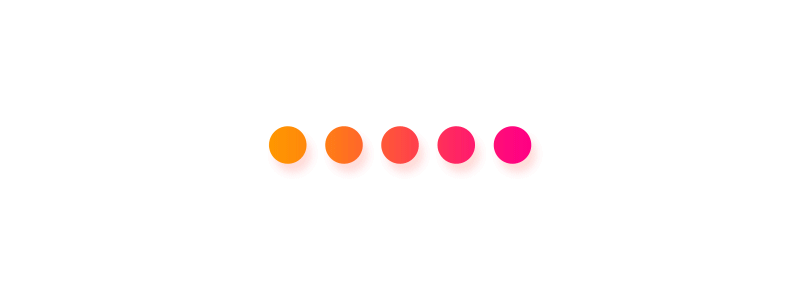


Key Highlights
• The term "herbal medicinal products" (HMPs) refers to a variety of natural treatments originating from plant sources, including leaves, roots, flowers, and stems. These products have medicinal potential based on conventional wisdom and cultural practices because they are abundant in bioactive substances like alkaloids, flavonoids, and terpenes. The majority of the time prepared as teas, tinctures, extracts, or capsules, HMPs provide holistic approaches to health and wellbeing that take into account an individual's overall state of balance. Although their historical importance and cultural legacy add to their allure, caution is advised because they can differ in terms of safety, efficacy, and quality. The use of herbal medicinal products for a variety of health advantages is responsibly ensured by regulation and consultation with medical experts.
• The market size of the worldwide Herbal Medicinal Products Market surpassed USD XX billion in 2022, and by 2032, it is projected to reach USD XX billion, boosting at a CAGR of XX%.
• In June 2022, Charak Pharma has launched new over-the-counter (OTC) medical goods. The business just unveiled Moha, a collection of herbal skin care, hair care, and personal care products.
• Over the past ten years, there has been an increase in the usage of alternative antibiotic medications, such as herbal remedies. Healthcare professionals and patients alike are becoming more and more interested in herbal products. WHO estimates that between 10 and 50 percent of people in affluent nations frequently consume herbal products. Furthermore, it is anticipated that a high demand for natural components will create opportunities for potential suppliers in emerging nations. Skincare products, which comprise a variety of items created with natural substances, are the most popular product category. Vegetable oils are a popular herbal natural material since they have practical uses and are good for the body and face. There are numerous plant-based extracts that are used for their usefulness. For instance, essential oils are primarily used as smells. This factor is anticipated to be a significant market driver for the revenue of herbal medicinal products. Customers typically choose these medications for painful ailments such joint pain, rheumatic diseases, stiffness, cough and cold, nervousness, and gastrointestinal illness. It is anticipated that the continuous trend of using herbal supplements would present potential growth opportunities.
Scope of the Industry Profile
Key Players
• Guangzhou Pharma Co
• Arkopharma Laboratories
• Dabur
• Dr. Willmar Schwabe
• Bayer AG
• Weleda
• Patanjali Ayurved Limited
• The Himalaya Drug Company
• TSUMURA & CO.
• Ortis
Segmentation
By Type
• Osmotic Laxative
• Stimulant Laxative
• Bulk Laxative
• Lubricant
• Emollient Laxatives
By Distribution
• Online Stores
• Offline Stores
By Source
• Natural
• Synthetic
• Other Sources
By Form
• Tablets
• Capsules
• Soft Gels
• Powder
• Gummies
• Liquids
• Other Forms
By End-user
• Adults
• Geriatric
• Pregnant
• Women
• Children
• Infants
What to Expect from Industry Profile
1. Save time carrying out entry-level research by identifying the size, growth, major segments, and leading players in the Herbal Medicinal Products market in the world.
2. Use the PORTER’s Five Forces analysis to determine the competitive intensity and therefore market attractiveness of the Global Herbal Medicinal Products market.
3. Leading company profiles reveal details of key Herbal Medicinal Products market players’ global operations, strategies, financial performance & their recent developments.
4. Add weight to presentations and pitches by understanding the future growth prospects of the Global Herbal Medicinal Products market with forecast for decade by both market share (%) & revenue (USD Million).
Recent Development
• In June 2022, Charak Pharma has launched new over-the-counter (OTC) medical goods. The business just unveiled Moha, a collection of herbal skin care, hair care, and personal care products.
• In February 2022, Hamdard, a prominent producer of traditional medicines in India, revealed ambitions to enter new consumer market niches with face wash, shampoo, and other products.
Segment Insights
By Form
Based on form, the category for tablets and capsules commands the majority of the market. In the market, a number of these medications are offered as pills and capsules. Additionally, taking herbal capsules and pills is mentioned in an increasing number of prescriptions. This market segment is anticipated to maintain its dominance on the global market during the forecast period due to the growing use of herbal products in the pharmaceutical industry. Based on form, the liquid and gel segment holds the second-highest market share. In the liquid category, a number of industry participants are introducing herbal and turmeric drinks.
By Distribution
Due to a number of circumstances, there is an increase in demand for herbal medicinal items, notably through online sources. First, people can conveniently research and buy herbal cures from the comfort of their homes thanks to easy access to a wide choice of items over the internet. Second, people are turning to alternative treatments because of the rising interest in natural and holistic health solutions. Online platforms provide a wealth of evaluations and information, enabling customers to make educated decisions. The COVID-19 epidemic has also pushed the use of online shopping, particularly for goods connected to health. Accessibility, a wide range of choices, and shifting customer preferences all play a role in the rising demand for herbal medicinal items through online channels.
Regional Insights
The biggest cosmetics industry in the world is in Europe, which is predicted to offer promising chances for new entrants from developing nations. The market for personal care and beauty goods is seeing a simultaneous increase in demand for natural ingredients, and this pattern is predicted to continue. The majority of the turmeric that is imported into the EU comes from India, but it is also produced in Sri Lanka, Thailand, Madagascar, Peru, and Madagascar. The longer life expectancy of Europeans is a key factor driving the demand for turmeric. Regional growth will be fueled by Europeans' growing health consciousness. Turmeric is a well-liked spice in the area due to the prevalence of ethnic food. Consumers in North America, especially those in the U.S., are becoming more health conscious, and a strong green wave has caused a change in people's attitudes toward natural beauty products. This is explained by the idea that alternative medications have harmful consequences on people's health. This has aided the product's success in the American market.
1. Key Findings
2. Introduction
2.1. Executive Summery
2.2. Regional Snapshot
2.3. Market Scope
2.4. Market Definition
3. Across The Globe
3.1. Factors Affecting End Use Industries
3.2. Upcoming Opportunities
3.3. Market Dynamics
3.3.1. Ongoing Market Trends
3.3.2. Growth Driving Factors
3.3.3. Restraining Factors
3.4. Value Chain Analysis
3.4.1. List of Manufacturers
3.4.2. List of Distributors/Suppliers
3.5. PORTER’s & PESTLE Analysis
3.6. Key Developments
3.7. Key Industry Patents
4. Global Herbal Medicinal Products
Market Overview, By Type
4.1. Market Size (US$ Mn) Analysis, 2019
– 2034
4.2. Market Share (%) Analysis (2023 vs
204), Y-o-Y Growth (%) Analysis (2023-2034) & Market Attractiveness
Analysis (2024-2034)
4.3. Market Absolute $ Opportunity
Analysis, 2019 – 2034
4.3.1.
Osmotic Laxative
4.3.2.
Stimulant Laxative
4.3.3.
Bulk Laxative
4.3.4.
Lubricant
4.3.5. Emollient
Laxatives
5. Global Herbal Medicinal Products
Market Overview, By Distribution
5.1. Market Size (US$ Mn) Analysis, 2019
– 2034
5.2. Market Share (%) Analysis (2023 vs
204), Y-o-Y Growth (%) Analysis (2023-2034) & Market Attractiveness
Analysis (2024-2034)
5.3. Market Absolute $ Opportunity
Analysis, 2019 – 2034
5.3.1. Online Stores
5.3.2. Offline Stores
6. Global Herbal Medicinal Products
Market Overview, By Source
6.1. Market Size (US$ Mn) Analysis, 2019
– 2034
6.2. Market Share (%) Analysis (2023 vs 204),
Y-o-Y Growth (%) Analysis (2023-2034) & Market Attractiveness Analysis
(2024-2034)
6.3. Market Absolute $ Opportunity
Analysis, 2019 – 2034
6.3.1.
Natural
6.3.2.
Synthetic
6.3.3.
Other Sources
7. Global Herbal Medicinal Products
Market Overview, By Form
7.1. Market Size (US$ Mn) Analysis, 2019
– 2034
7.2. Market Share (%) Analysis (2023 vs
204), Y-o-Y Growth (%) Analysis (2023-2034) & Market Attractiveness
Analysis (2024-2034)
7.3. Market Absolute $ Opportunity
Analysis, 2019 – 2034
7.3.1.
Tablets
7.3.2.
Capsules
7.3.3.
Soft Gels
7.3.4.
Powder
7.3.5.
Gummies
7.3.6.
Liquids
7.3.7.
Other Forms
8. Global Herbal Medicinal Products
Market Overview, By End-user
8.1. Market Size (US$ Mn) Analysis, 2019
– 2034
8.2. Market Share (%) Analysis (2023 vs
204), Y-o-Y Growth (%) Analysis (2023-2034) & Market Attractiveness
Analysis (2024-2034)
8.3. Market Absolute $ Opportunity
Analysis, 2019 – 2034
8.3.1.
Adults
8.3.2.
Geriatric
8.3.3.
Pregnant
8.3.4.
Women
8.3.5.
Children
8.3.6.
Infants
9. Global Herbal Medicinal Products
Market Overview, By Region
9.1.
Market
Size (US$ Mn) Analysis, 2019 – 2034
9.2.
Market
Share (%) Analysis (2023 vs 204), Y-o-Y Growth (%) Analysis (2023-2034) &
Market Attractiveness Analysis (2024-2034)
9.3.
Market
Absolute $ Opportunity Analysis, 2019 – 2034
9.3.1.
North
America
9.3.2.
Europe
9.3.3.
Asia
Pacific
9.3.4.
Middle
East & Africa
9.3.5.
South
America
10. North America Herbal Medicinal
Products Market Overview
10.1. Market Size (US$ Mn) Analysis, 2019
– 2034
10.2. Market Share (%) Analysis (2023 vs
204), Y-o-Y Growth (%) Analysis (2023-2034) & Market Attractiveness
Analysis (2024-2034)
10.3. Market Absolute $ Opportunity
Analysis, 2019 – 2034
10.3.1. By Country
10.3.1.1.
U.S.
10.3.1.2.
Canada
10.3.1.3.
Mexico
10.3.2. By Type
10.3.3. By Distribution
10.3.4. By Source
10.3.5. By Form
10.3.6. By End-user
11. Europe Herbal Medicinal Products
Market Overview
11.1. Market Size (US$ Mn) Analysis, 2019
– 2034
11.2. Market Share (%) Analysis (2023 vs
204), Y-o-Y Growth (%) Analysis (2023-2034) & Market Attractiveness
Analysis (2024-2034)
11.3. Market Absolute $ Opportunity
Analysis, 2019 – 2034
11.3.1. By Country
11.3.1.1.
UK
11.3.1.2.
Italy
11.3.1.3.
Spain
11.3.1.4.
Germany
11.3.1.5.
France
11.3.1.6.
Rest of Europe
11.3.2. By Type
11.3.3. By Distribution
11.3.4. By Source
11.3.5. By Form
11.3.6. By End-user
12. Asia Pacific Herbal Medicinal
Products Market Overview
12.1. Market Size (US$ Mn) Analysis, 2019
– 2034
12.2. Market Share (%) Analysis (2023 vs
204), Y-o-Y Growth (%) Analysis (2023-2034) & Market Attractiveness
Analysis (2024-2034)
12.3. Market Absolute $ Opportunity
Analysis, 2019 – 2034
12.3.1. By Country
12.3.1.1.
China
12.3.1.2.
Japan
12.3.1.3.
India
12.3.1.4.
South Korea
12.3.1.5.
Rest of Asia Pacific
12.3.2. By Type
12.3.3. By Distribution
12.3.4. By Source
12.3.5. By Form
12.3.6. By End-user
13. Middle East & Africa Herbal
Medicinal Products Market Overview
13.1. Market Size (US$ Mn) Analysis, 2019
– 2034
13.2. Market Share (%) Analysis (2023 vs 204),
Y-o-Y Growth (%) Analysis (2023-2034) & Market Attractiveness Analysis
(2024-2034)
13.3. Market Absolute $ Opportunity
Analysis, 2019 – 2034
13.3.1. By Country
13.3.1.1.
GCC
13.3.1.2.
South Africa
13.3.1.3.
Rest of Middle East & Africa
13.3.2. By Type
13.3.3. By Distribution
13.3.4. By Source
13.3.5. By Form
13.3.6. By End-user
14. South America Herbal Medicinal
Products Market Overview
14.1. Market Size (US$ Mn) Analysis, 2019
– 2034
14.2. Market Share (%) Analysis (2023 vs
204), Y-o-Y Growth (%) Analysis (2023-2034) & Market Attractiveness
Analysis (2024-2034)
14.3. Market Absolute $ Opportunity
Analysis, 2019 – 2034
14.3.1. By Country
14.3.1.1.
Brazil
14.3.1.2.
Argentina
14.3.1.3.
Rest of South America
14.3.2. By Type
14.3.3. By Distribution
14.3.4. By Source
14.3.5. By Form
14.3.6. By End-user
15. Country Wise Market Analysis
15.1. Growth Comparison By Key Countries
16. Competitive Landscape
16.1. Market Share (%) Analysis, By Top
Players
16.2. Maret Structure Analysis, By Tier I
& II Companies
17. Company Profiles
17.1. Guangzhou Pharma Co
17.1.1. Company Overview
17.1.2. Business Segments
17.1.3. Financial Insights
17.1.4. Key Business Aspects (Noise
Analysis)
17.2. Arkopharma Laboratories
17.3. Dabur
17.4. Dr. Willmar Schwabe
17.5. Bayer AG
17.6. Weleda
17.7. Patanjali Ayurved Limited
17.8. The Himalaya Drug Company
17.9. TSUMURA & CO.
17.10. Ortis
18. Analysis & Recommendations
18.1. Targeting Segment
18.2. Targeting Region
18.3. Market Approach
19. Research Methodology
20. Disclaimer
Your experience on this site will be improved by allowing cookies.